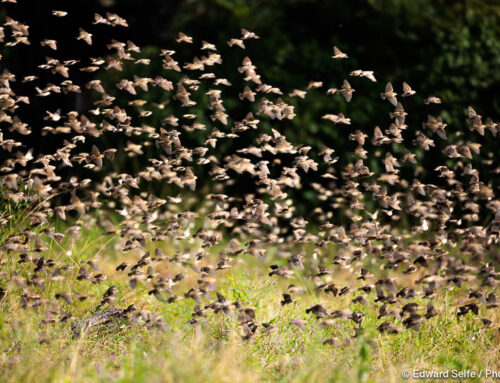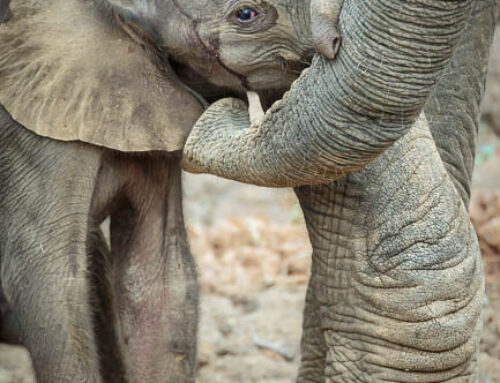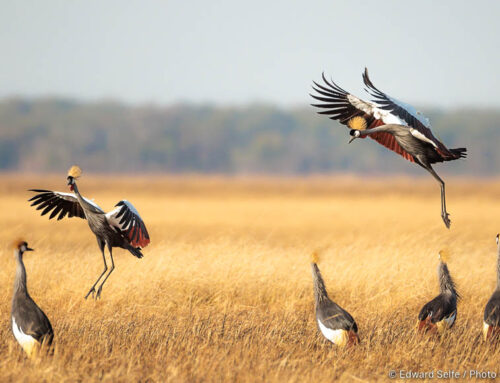The African Fish Eagle is known to all who have travelled to sub-Saharan Africa as a visible, vocal and charismatic bird. Visitors returning to Luangwa often smile in recognition as a nearby Fish Eagle screams its unmistakable territorial call.
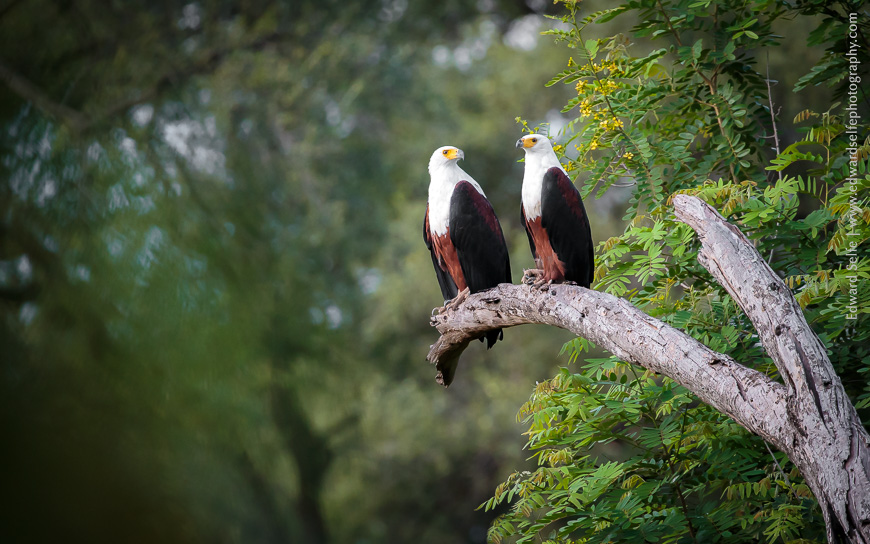
Large eagles often pair for life, or form a “long term pair bond” as it’s know to wildlife scientists. Fish Eagles are no exception, and I have enjoyed watching the same pairs hold territories for many years along some stretches of river. As can be seen from the photo above, males and females have similar plumage, but the female (on the left) is much larger than the male – up to 20% larger. This is common in many large raptors and is thought to result from the female’s need to grow and subsequently defend large eggs.
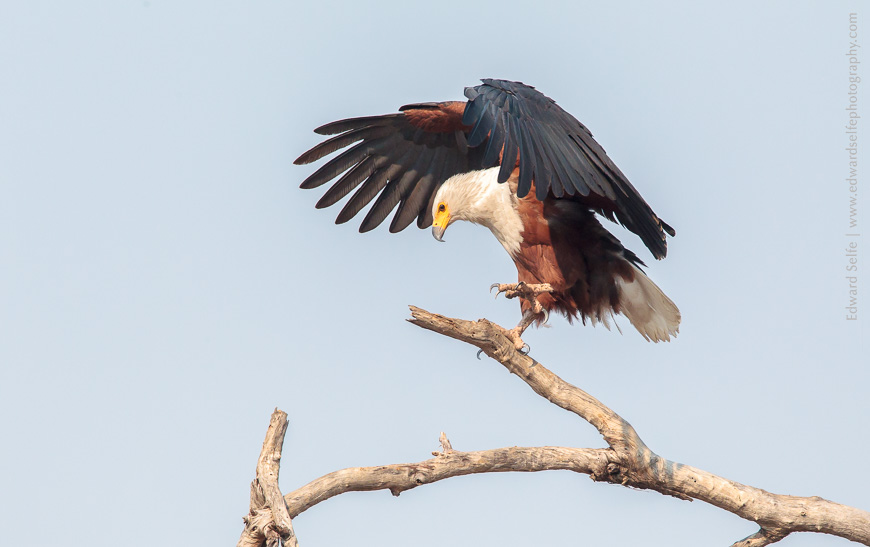
As their name suggests, they are specialised fish hunters, often seen swooping low over the water to pluck a slippery fish from near the surface. They perch for hours in a well-placed spot, scouting for potential prey, waiting for an opportunity. Dragging a large, wet fish from the water requires considerable strength, so fish eagles have developed large, broad wings to generate lift and extremely long, rather slender talons.
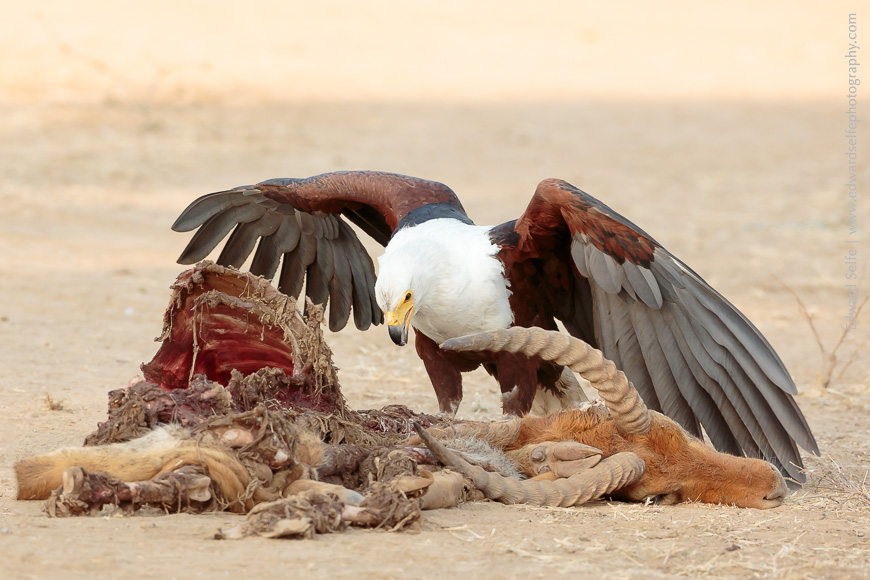
However, creatures of the wild often thrive by being generalists; Fish Eagles have learned to gather food from a variety of other sources too. Monitor lizards are a favourite prey, as are rodents, scrub hares and occasionally snakes. But Fish Eagles are at their most entertaining when scavenging food from other predators; I have seen a pair harassing a Yellow-billed Stork until it gave up its prized cat-fish, and I’ve also seen a single bird swoop silently to snatch a small fish from the bill of a Marabou Stork! However, it wasn’t until this year – when Wild Dogs killed antelope repeatedly in one area – that I saw a pair of eagles make a living off the scraps of mammal carcasses!
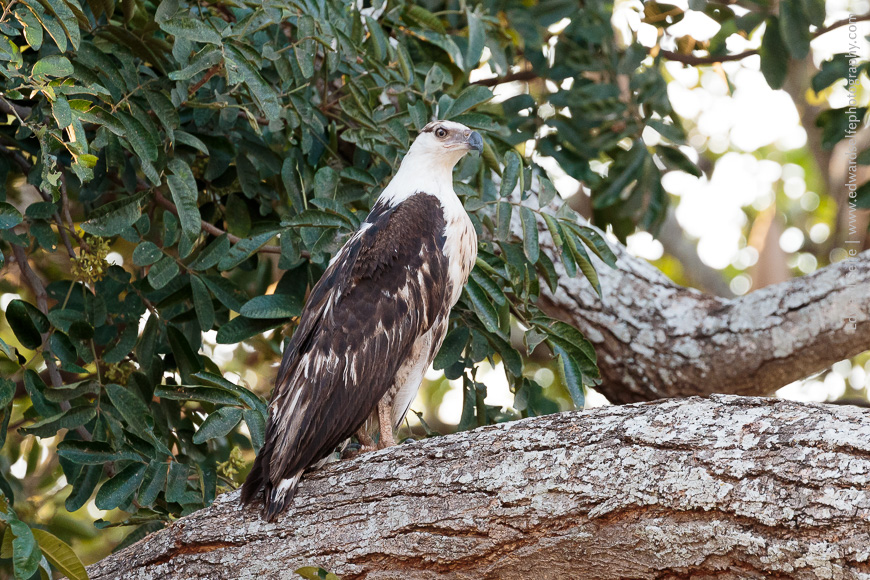
Youngsters are hatched at any time during the Luangwa dry season, but mostly in April to August. They are very vocal from the start, begging for food from the parents. Often 2 chicks co-exist, although sometimes only 1 seems to survive. Their immature plumage is duller than the adults’, lacking the rich red-brown flight feathers and the bright yellow cere.
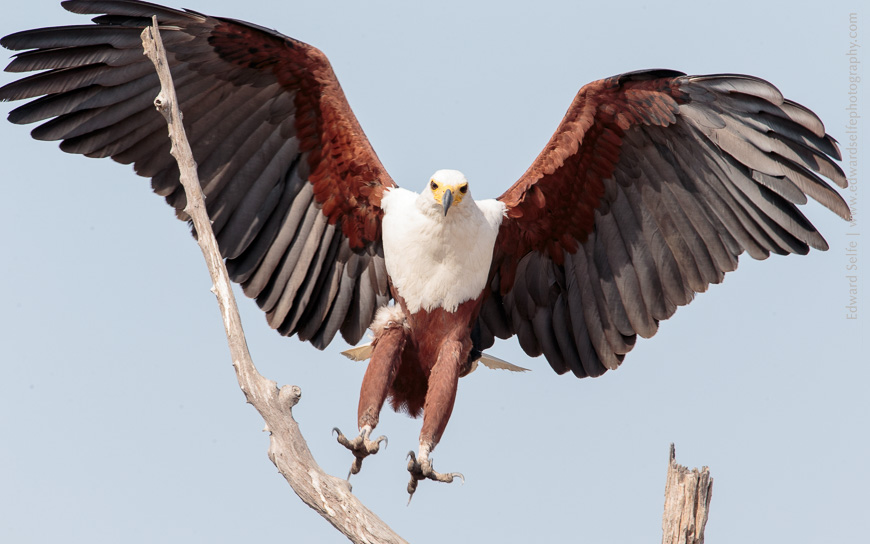
Fish Eagles are highly visible in Luangwa, and many of them have become very confiding, allowing close approaches and wonderful photographic opportunities. This one landed so close to us, that I clipped his wings!

